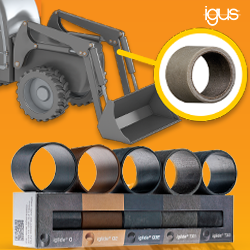Self-Folding Origami Robot Goes From Flat to Walking in Four Minutes
Hitchbot is Halfway Across its Canadian Journey
Nvidia Jetson TK1 Development Kit
Scalability and the Commercial Reality of 3D Printing in the Future
Ino: Command Line Toolkit for Arduino Hardware
REMUS SharkCam: The Hunter and the Hunted
Automated Vision Inspection and Parts Traceability in Automotive Assembly Process
Robot With Broken Leg Learns To Walk Again In 2 Minutes
Integrated Ultra-compact Barcode Imagers Enable Automated Laboratory Diagnostics
The Impact of 3-D printing on Supply Chains
JIBO
The First 5 Material Liquid Cooled 3D Printer
OpenFPV
HEXO+ and their wildly successful Kickstarter project
5 Robotics Related Kickstarters And One Funded Product Available Now
Records 3001 to 3015 of 3562
First | Previous | Next | Last
Featured Product

